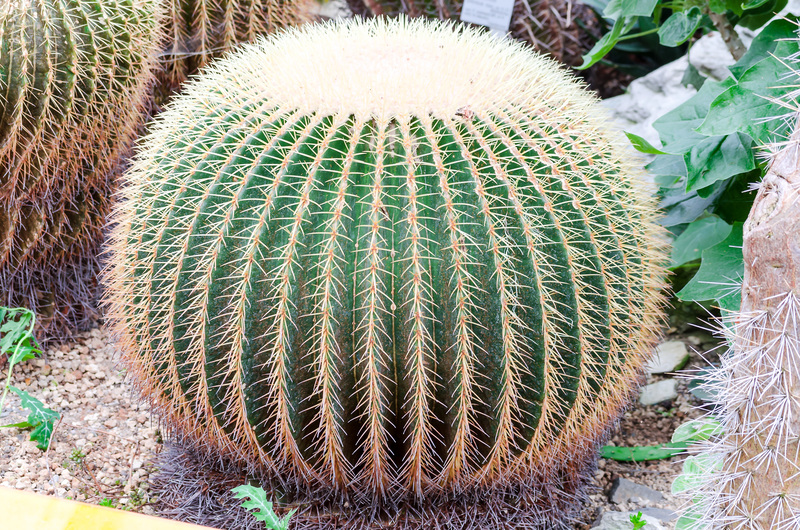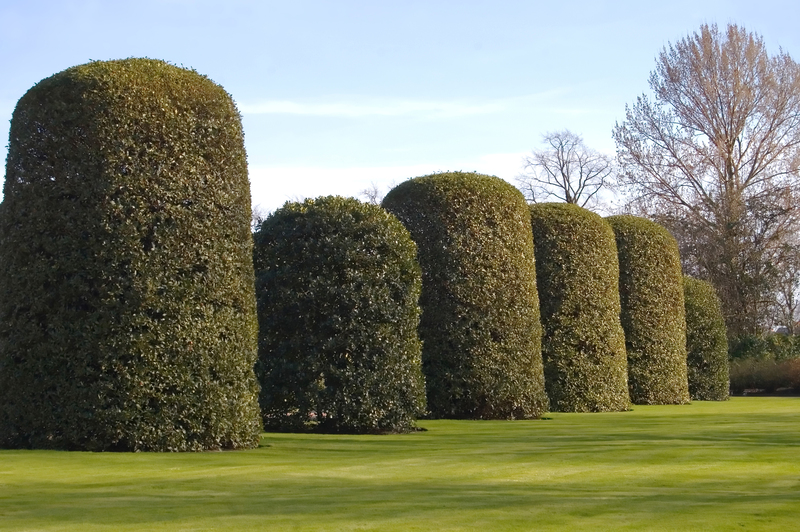Sun-Loving vs Shade-Loving Window Box Plant Recommendations
Creating a vibrant, lush window box garden is one of the best ways to transform your home's exterior. However, selecting the right plants for window boxes depends mainly on sunlight exposure. Understanding the requirements of sun-loving and shade-loving plants is essential for a flourishing display. In this comprehensive guide, we'll delve into the best recommendations for both sunny and shaded window box locations, ensuring your plantings thrive all season long. Get ready to design a window box oasis tailored perfectly to your home's light conditions!

Why Sun Exposure Matters for Window Box Planting
Window boxes face unique challenges. Unlike garden beds, they have limited soil, faster moisture loss, and, depending on their location, either abundant sunshine or lingering shade. Plants need the right amount of sun or shade for robust growth and continuous blooming. Selecting species based on their light needs is crucial for a healthy, attractive window box display.
- Sun-loving plants require at least 6 hours of direct sunlight daily.
- Shade-tolerant plants thrive in low light conditions, needing less than 4 hours of direct sun.
- Partial shade or partial sun plants prefer 4-6 hours of sunlight.
Read on for the best window box plant recommendations for both sunny and shady locations, plus expert tips for beautiful, long-lasting displays.
Best Sun-Loving Plants for Window Boxes
If your window boxes are south- or west-facing, they likely receive plenty of sunlight. The following sun-loving window box plants flourish in these conditions, offering color, fragrance, and texture all season.
Top Sun-Loving Annuals for Window Boxes
- Petunias: Beloved for their prolific blooms and bold colors, petunias thrive in full sun. Spreading or trailing varieties like Wave Petunias create lush cascades over box edges.
- Calibrachoa: Often called "Million Bells," these small, petunia-like flowers bloom continuously in sunny window boxes and are available in dozens of vibrant shades.
- Geraniums: With their vivid blooms and attractive foliage, geraniums are classic choices for sunny containers. Both upright and ivy-leaved types work well.
- Verbena: Known for clusters of tiny flowers, verbena offers season-long blooms and attracts pollinators.
- Zinnias: These heat-loving annuals produce bright, long-lasting flowers in every color imaginable. They're prized for their drought tolerance and easy care.
- Lantana: Lantana's clusters of multi-colored flowers tolerate hot, dry conditions and attract butterflies.
Perennials and Sun-Loving Foliage Plants
- Lavender: Ideal for sunny locations, lavender combines delightful fragrance with lovely spikes of purple or blue flowers.
- Succulents: Variety is key here! Mix rosettes and trailing types (like sedum and string of pearls) for a drought-tolerant, modern look.
- Salvia: Salvia brings spikes of vibrant purple, blue, or red blooms and is heat- and drought-tolerant.
- Dusty Miller: Silver-gray foliage adds contrast and pairs beautifully with colorful blooms.
Tips for Designing Sunny Window Boxes
- Group sun-loving species with similar water and soil requirements for best results.
- Use quality, well-draining potting mix and consider adding slow-release fertilizer for continuous nutrition.
- Choose a mix of upright, mounding, and trailing plants to create layers and visual interest (the "thriller, filler, spiller" method).
- Water regularly--sun-exposed containers dry out quickly, especially in the heat of summer.
Top Shade-Loving Plants for Window Boxes
North- or east-facing window boxes, under eaves, or shaded by trees may receive little direct sun. Such spaces call for shade-tolerant window box plants that brighten the area without craving sunlight.
Favorite Shade-Loving Annuals for Window Boxes
- Impatiens: The top choice for reliable color in low light, impatiens bloom in pink, white, red, orange, and purple.
- Begonias: Both wax and tuberous begonias provide attractive foliage and nonstop bloom in shaded spots.
- Fuchsia: Famous for their pendulous, two-tone blooms, fuchsias are mesmerizing in hanging or elevated window boxes.
- Lobelia: Cascading blue, purple, or white flowers make lobelia a classic "spiller" for shady containers.
- Torenia (Wishbone Flower): With intricate, snapdragon-like blooms in purple, blue, pink, and yellow, Torenia is perfect for moist, shady window boxes.
Perennials and Shade-Tolerant Foliage Options
- Heuchera (Coral Bells): Known for striking, colorful foliage ranging from lime to deep burgundy. Compact and shade-hardy.
- Hosta: Miniature or small hostas add lush, variegated greenery to shaded window boxes.
- Ferns (such as Boston or Maidenhair): Their feathery texture brings softness and elegance to any low-light arrangement.
- Lamia (Dead Nettle): Choose for silver-spotted leaves and purple or white blooms. It trails attractively over box edges.
Tips for Arranging Shade Window Boxes
- Combine colorful foliage and texture to make up for fewer flowers.
- Use plants with glossy or variegated leaves to brighten dark spaces.
- Keep soil evenly moist--shade slows drying, but don't let roots stay soggy.
- Rotate or swap out spent plants to maintain an attractive display all season.
Combining Sun and Shade: Partial Sun/Part Shade Plant Ideas
For window boxes that receive morning sun and afternoon shade--or vice versa--opt for versatile plants that tolerate both conditions. Here are top picks for changing light:
- New Guinea Impatiens: Tolerate sun but bloom best with some shade, ideal where light levels shift throughout the day.
- Coleus: Valued for vivid foliage, many newer varieties thrive in both sun and shade.
- Sweet Alyssum: White or pastel blooms spill over box edges and grow happily in part-sun locations.
- Bacopa: Produces tiny white, blue, or pink flowers and thrives in both full sun and partial shade.
- Trailing vines like ivy, sweet potato vine, and dichondra: These provide lush greenery in a range of light conditions.
How to Determine Sun vs Shade for Your Window Box
Before selecting your plants, carefully assess your window box's exposure:
- Full sun: 6+ hours of direct sunlight (usually south- or west-facing)
- Partial sun/part shade: 3-6 hours of sunlight, often in the morning or late afternoon
- Full shade: Less than 3 hours of direct sun, or dappled/filtered light all day
Tip: Observe your window box's light patterns over a full day and season, as sunlight shifts with time of year and nearby vegetation growth.
Choosing the Right Plants for Window Box Success
- Select healthy, high-quality starter plants or seeds.
- Balance color, height, and texture for an attractive arrangement that looks great from inside and outside your window.
- Use "thriller," "filler," and "spiller" plants--upright focal points, mounding midsize fillers, and trailing spillers for fullness.
- Fertilize regularly as window box plants need more nutrients than those growing in open ground.
- Deadhead and prune regularly to encourage reblooming and tidy growth.
Common Mistakes to Avoid in Window Box Planting
- Ignoring sunlight requirements and choosing plants unsuited to your window's exposure
- Overcrowding: Small plants grow fast! Give roots enough room for air and water, and avoid cramping.
- Poor drainage: Ensure containers have drainage holes and use fast-draining soil to prevent root rot.
- Under- or over-watering: Check soil moisture often, especially during heat waves or rainy spells.
- Neglecting to feed: Limited soil means fewer nutrients; fertilize every 2-4 weeks as needed.
Seasonal Swaps and Year-Round Window Box Ideas
Window boxes offer a chance for continuous creativity! In addition to classic spring and summer blooms, try these seasonal swaps:
- Spring: Plant early bulbs such as daffodils, tulips, or hyacinths with pansies or violas for cool-season color.
- Summer: Switch to heat-lovers like petunias, geraniums, coleus, and trailing vines that thrive in summer sun (or impatiens, fuchsias, and begonias for shade).
- Fall: Add ornamental grasses, mums, asters, or small ornamental kale/cabbages for autumn interest.
- Winter: In mild climates, try evergreen ferns, dwarf conifers, or add evergreen boughs, pine cones, and berries for decor.

Eco-Friendly, Pollinator, and Edible Options
- Pollinator-friendly plants: Choose sun lovers like lantana, zinnia, and salvia for butterflies and bees. In shade, try fuchsia and impatiens.
- Herbs in window boxes: Many culinary herbs love sun--think thyme, basil, oregano, and chives. For shadier boxes, choose parsley, mint, or thyme.
- Low-water "green" window box ideas: Succulents and drought-tolerant flowers reduce water use and still impress in sunny spots.
Conclusion: Create Your Best Window Box Garden
Whether you're working with abundant sunshine or a hidden, shady nook, the secret to gorgeous window boxes is matching the right plants to the right place. With so many beautiful plant options for sun and shade window boxes, you'll find the perfect combination for any space. Enjoy experimenting with different colors, textures, and forms throughout the seasons. With these expert recommendations, your window box will become a vibrant highlight in your home's landscape--no matter the light conditions!
Remember: Choosing plants based on sunlight ensures happier, healthier blooms and less maintenance. So assess your window's exposure, try some of these proven sun- and shade-loving favorites, and look forward to a thriving, eye-catching display all year long.